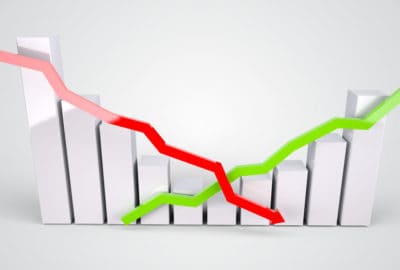 You most probably are familiar with the term Key Performance Indicators, or simply KPIs. KIPs are guides specially designed to measure the performance of business objectives previously established.
You most probably are familiar with the term Key Performance Indicators, or simply KPIs. KIPs are guides specially designed to measure the performance of business objectives previously established.
In this order of ideas, decision makers usually measure such objectives in percentages of execution. Same, decision makers trust in KPIs because they have proven their great utility to follow up on tasks; measure performance; detect deviations; and comply with Service Level Agreements.
In this sense, the uses of KPIs extend to all the sensitive areas of the companies; and they are really useful to create real statistics that can be perfectly translated into financial terms that respond to corporate interests. But in any case, you have to very careful when creating them.
Do KPIs work the same for all departments?
First of all, we need to put ourselves in context and understand that KPIs created to measure the activities of the Sales Department are different from KPIs that value the activities of the IT Department.
However, they handle a common nomenclature displayed either in the Control Panel or in the Scorecard (they have a subtle difference that we will see later).
In summary, KPIs are a communication bridge that connects vision; mission and objectives of each department with the company; and they do not respond the same in each particular context or department. Let’s see how to create and organize them in the most optimal way.
Most used KPIS
Among the most used KPIs, we find:
a. Financial Indicators
First of all, we find the financial indicators. With them we measure liquidity; indebtedness capacity; solvency; etc.
b. Economic Indicators
Following, we find economic indicators. They allow to measure costs; incomes; expenses; cost-effectiveness ratio; etc. Together with the financial indicators, they are ideal for the Finance, Treasury and Accounting Departments
c. Service and Attention Indicators
Third, we find Service and Attention indicators. They make easier the measurement of average time for customer service (via telephone, face-to-face, virtual); orders in transit; claims; new clients; etc. Given the nature of these KPIs, they suit better in Customer Service; Sales and Marketing Departments.
 d. Quality Indicators
d. Quality Indicators
Next, quality indicators allows us to delve in deeper levels of analysis. They allow us to measure percentage of deviations; production defects and their processes; quality levels of the final products; number and types of failures in equipment and processes; service interruptions; etc.
Together with production indicators, quality indicators are ideal for giving insight to medium and high managerial positions. This is the reason why they are their favorites when making executive decisions related to industrial processes.
e. Production Indicators
Also in this list, we find the indicators for production departments. They allow us to evaluate levels of production and efficient processes; value the production materials and other similar aspects.
F. Logistics Indicators
Finally, we reach logistics indicators. Through them we measure orders; deliveries; inventory rotation; times of delivery and replacement and similar. They are ideal for the departments of dispatch and warehouse.
How to create adequate and powerful KPIs?
Now, for you to use congruent KPIs to measure whatever you need; you must define and program them correctly into logical units. In this sense, you will find such definitions in the individual objectives of each department; and they should be governed by these principles:
-
Parameters
This is the logical starting point to create suitable and powerful KPIs. The first thing you need to do is identifying the goals they pursue.
At this point, you also need to establish responsibles and decision makers for compliance (supervisors and executors). With them, you will be able to make informed decisions and taking actions related to the financial health of your company.
-
Activity to evaluate
Following, we must establish what activity and concepts we are going to contrast them to so to to calculate values in terms of optimal; acceptable; improvable and unacceptable.
-
Units of measurement and ratio
Next, we address to the mathematical methods to translate KPIs into financial terms. This action will give us more tools to calculate the Return of Investments (ROI); and similar aspects for the profitability of the company.
-
Periodicity
Finally, we need to determine how often we will check and measure the progress of each task. Generally speaking, measurement should be done on a daily basis; however, it is highly recommended to prepare periodic reports to collect those measurements to perform supervisory tasks. This action helps us define the relevance of each KPI we use.
Practical example of the use of KPIs
 As our area of expertise are IT and Digital Security; we’ll give you a practical example of using KPI for IT Departments.
As our area of expertise are IT and Digital Security; we’ll give you a practical example of using KPI for IT Departments.
-
Defining KPIs for IT. The most common for this department are:
-
- Rate of resolution of IT problems and incidents at first call.
- Average duration of calls for the solution of IT problems and incidents.
- Amount of security incidents and events.
- Overall satisfaction of the internal and external customer.
Also, to determine the efficiency and effectiveness of the KPIs for the IT department; we must contrast them against other indicators. We recommend doing so against:
Information Security Indicators
- Number of systems incidents or violations to the infrastructure security.
- Percentage of systems and applications compatible with pre-established security policies.
- Number of security patches and updates applied in established periods
Project Performance Indicators
- Total amount of projects successfully executed in a period and on the budget (expressed in percentage).
- Percentage of time consumed by deviations, defects and redirection of scopes.
- Production defects expressed in numbers.
- Total amount of projects that did not comply with the original execution plan. In this category we gather projects that exceeded the original budget; or delayed in terms of time. It is measured in percentage.
Operations Management Indicators
- Total time invested in activities of critical applications and systems.
- Production incidents organized by gravity, and expresed in total amounts.
- Average time to solve production problems and incidents.
- Total amount of solved tickets according to the Service Level Agreements (SLA).
- Average and total time for the solution of service requests.
- Time lost due to unscheduled service interruptions.
Indicators of Financial Management
- IT costs regarding to the company’s total revenue expressed in porcentual terms.
- Total Expenses vs Budgets.
- Averages between entries and monthly and annual resources.
- Total savings from productivity improvements.
How do we organize our KPIs?
There are two ways to organize KPIs: In Scorecards or in Control Panels (Dashboard). Although the trend is to use them indistinctly; they have a subtle difference: Scorecards measure the progress and achievement of objectives according to the KPIs; while the Dashboards measure the performance to throw numbers and metrics.
In both cases, we recommend following these best practices to keep them always organized:
- Make sure that your scorecards or dashboards show the gradual progress of the tasks towards the achievement of objectives.
- Establish monitoring lines focused on business objectives.
- Identify and emphasize the value that IT brings to the company.
- Summarize the progress and events of whatever happens in IT.
- Configure them to provide real-time support information that facilitates decision making.
Also, try to comply with these characteristics that facilitate their manipulation:
- Try to make them a single page.
- Give simple descriptions; easy to read (legible text with standard size and shape).
- Save the process of decoding and supplementing instructions with additional data.
- Make sure they have concise and pertinent instructions.
- Check that they contain updated information.
As you can appreciate; The use of KPIs brings you a little closer to the excellence you aspire to. And we also know how much it demands to create and update them.
GB Advisors helps you make and carry out your plans to establish powerful KPIs that help you boost the overall performance of your company; area by area. Write us here and we will attend your case.



